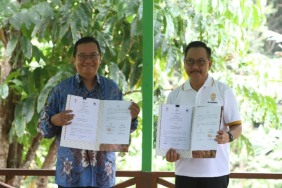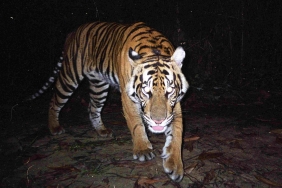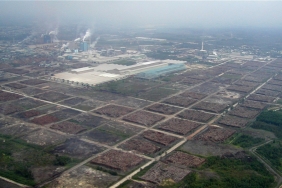WITH PARTNERS, WWF INDONESIA CONDUCTS KALIMANTAN ELEPHANT OCCUPANCY SURVEY
By: Agus Suyitno
Human-Elephant Conflict Mitigation Officer
On February 13-23, 2018 WWF Indonesia conducted a Borneo Elephant occupancy survey in Tulin Onsoi District, Nunukan Regency. The survey activities were carried out collaboratively by involving parties including the East Kalimantan Natural Resources Conservation Agency (BKSDA), Nunukan Environmental Agency (DLH), Gapeta Borneo Nunukan Nature Lovers, Faculty of Forestry Students of Unmul Samarinda, Tulin Onsoi Elephant Conflict Task Force and the local community. The purpose of this survey is to update the previous survey data in 2012 or 6 years ago where the previous population size was estimated at 30-80 individuals with a habitat area of around 93,800 Ha.
This survey was conducted using the occupancy method to record the distribution of Kalimantan Elephant habitat presence combined with the dung count method for population counting. The occupancy survey uses a 5x5 km grid or survey plot, within which there is a small 1x1 km grid, while the dung count is a data collection of elephant dung findings.
WWF Indonesia has set the Borneo Elephant survey area as many as 40 survey grids, 1 survey grid with a size of 5x5 km (25 km²) so that the area targeted by the Borneo Elephant survey from 2018 to 2019 is 1,000 km² or 100,000 hectares, if the survey can be completed in 2018 it will be better of course. Future survey data is expected to be used by the parties as a reference in the implementation of Borneo Elephant conservation activities.
The occupancy survey method and dung count is the first time applied in this survey, before the field data collection for 2 days training was conducted to the survey team trained by Wisnu Sukmantoro from the Indonesian Elephant Association (PGI).
The survey this time focused on river areas that are part of the Borneo Elephant habitat, the survey activities were divided into 4 teams namely the Agison river team, Sibuda river team, Apan river team and Tampilon river team. The team traveled to the survey location by boat which took 1 to 2 days. The upstream area of the river is a tough area to pass, the team must go through hills, cliffs and rushing rocky river water, the altitude area reaches 1,000 meters above sea level (above sea level).
In this survey activity, the team still did not find direct elephant encounters but signs of elephant presence that became the target of the survey were found by all teams such as tracks, feces, friction marks and puddles. It is still difficult to have direct encounters with elephants given their small population and large habitat. However, the findings of tracks and dung are a sign that Borneo elephants still exist and breed in the area.
The forest area that has been surveyed which is the habitat of Borneo elephants is still in a fairly good condition, no forest encroachment or illegal logging has been found in the area. However, some threats were also found including agarwood hunting activities in elephant habitat, hunting activities that use snares and the opening of new roads, according to community information, the possibility of opening a new road is the Trans Kalimantan road so it needs to be coordinated with the government.
Of the 14 survey grids targeted in this survey, the team was only able to complete 10 survey grids because the terrain was quite heavy, the main obstacle was the bad weather, in the field there was frequent rain and flooding, especially in the upper reaches of the river. From this survey activity about 25% of the survey area has been carried out, so there are still 75% of the area that has not been surveyed and will be continued until 20018/2019.





